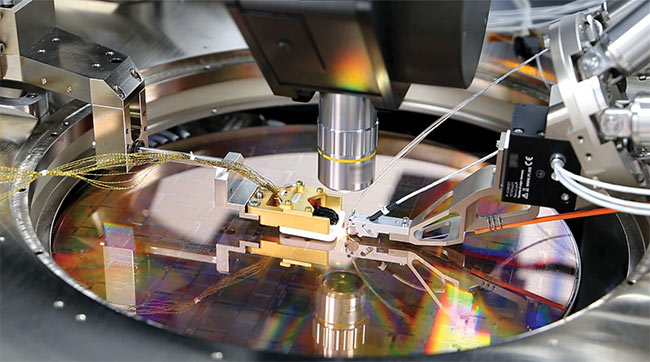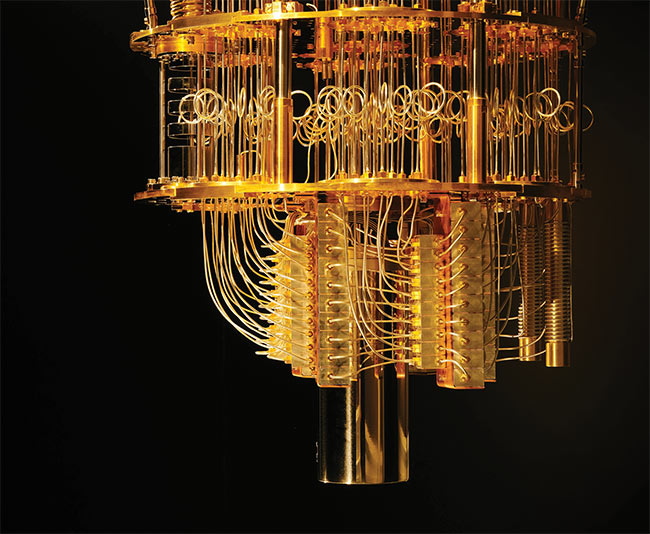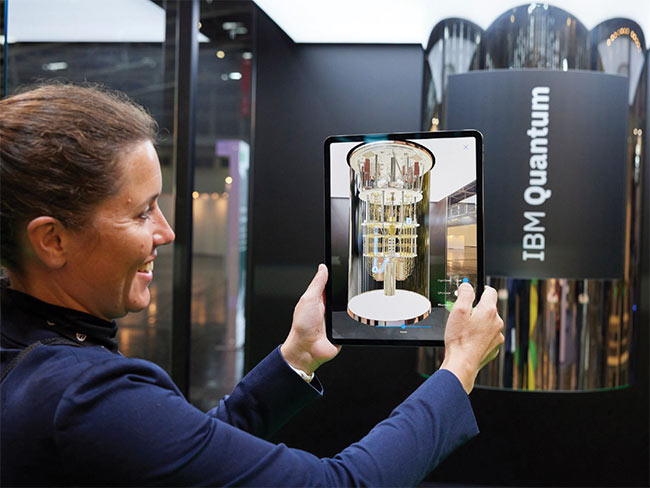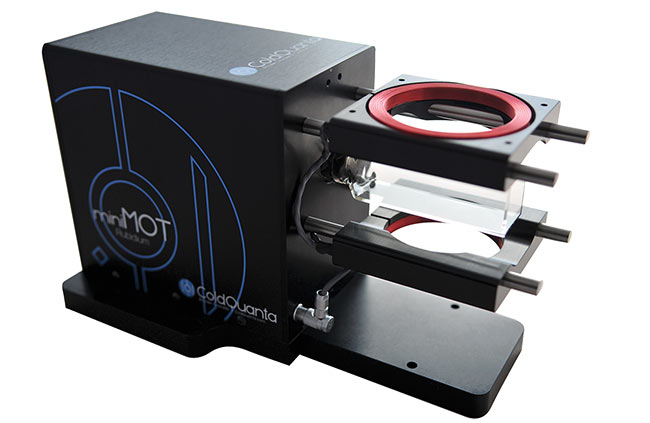The emerging quantum industry faces a colossal challenge: defining multidisciplinary skill sets by which to qualify and train its workforce. Workers with photonics skills may apply.
JOEL P. WILLIAMS, ASSOCIATE EDITOR
The infancy of the second quantum revolution is upon us. A century of studying and modeling of quantum mechanics defined the first revolution. But today we are exploiting those mechanics with increasing precision to introduce disruptive applications in sensing, timekeeping, communications, encryption, and computing — often with the help of photonics.

Physicists have spent the past century exploring the principles of quantum mechanics. The next challenge is to educate, recruit, and employ a quantum workforce to convert these scientific principles into valuable, manufacturable, and scalable solutions. Courtesy of iStock.com/Devrimb.
Although the technologies driving this revolutionary struggle are not yet mature, they are attracting a great deal of interest and investment from both government and private organizations. While market projections for the quantum industry are inconsistent, they continue to help spur the momentum. All indications point to double-digit near-term growth. This is good news for investors but not for hiring managers, who face a scarcity of workers to meet the sector’s demands.
The biggest damper on industry growth could prove to be the thin pipeline of qualified workers, said Doug Finke, a
member of the Quantum Economic Development Consortium’s (QED-C’s) technical advisory board and editor-in-chief of the Quantum Computing Report. “It’s really difficult to find people because it’s such a new field.”
Neil Anderson, general manager of quantum components at ColdQuanta, echoed the sentiment. The rarity of candidates fluent in concepts such as atomic molecular optics, Bose-Einstein condensates, intricate optomechanical design, and engineering and assembly make recruitment challenging, he said.

A silicon wafer incorporating thousands of quantum devices exemplifies the arrival of the so-called Quantum 2.0 era, in which engineers and manufacturers are teaming with physicists to convert fundamental quantum science into valuable, manufacturable, and scalable solutions. Courtesy of PsiQuantum.
Further complicating the issue is that many quantum applications carry significant implications for national security, and working on such sensitive projects often requires candidates to qualify for security clearances or to clear residency and citizenship hurdles. This has led several countries to raise discussions about the quantum workforce to the national level. The U.S., China, the U.K., the European Union, and rising powers such as India and South Korea have all poured funding into their respective local industries, with particular focus on the areas of computing, encryption, and networking.
Government reports describing these initiatives consistently include measures to bolster the workforce. A report published earlier this year by the National Science and Technology Council’s (NSTC’s) Subcommittee on Quantum Information Science, which coordinates efforts stemming from the 2018 National Quantum Initiative Act, revealed that the field is currently producing more job openings than it can fill.
Photonics bridges the quantum gap
The NSTC recently issued a Quantum
Information Science and Technology (QIST) Workforce Development National Strategic Plan that addresses the immediate need for workers in the field. “In
planning the development of talent, one must heed the necessary timelines for education and training,” the authors of
the report said.
While the sector is still emerging,
defining the coursework needed to educate and train a quantum workforce is a challenge. For now, according to the report, the short-term demand for qualified talent will likely be filled by a combination of recent graduates and midcareer workers who are transitioning into related fields.
“Much of the workforce moving into QIST employment is likely to come from computer science and engineering, electrical engineering, materials engineering, and other closely related fields,” the authors said. To date, industry-specific academic paths are still lacking.
A study by QED-C found more consensus on the need for workers with particular skill sets rather than on the need for those with specific degrees. This speaks to the transdisciplinary nature of quantum technology and the need to develop educational pathways that train people to work closely with specialists from various fields (see sidebar, “Quantum Training Programs Spread Their Focus”).
“You don’t necessarily have to have a Ph.D. in physics to work in quantum,” Finke said. Although it would be nice to know everything a chip designer at Intel knows, he said, a supplemental course to learn the basics of quantum technology could bridge the gap in understanding.
Jeff Joy, director of talent acquisition at ColdQuanta, said that workers with functional knowledge of quantum disciplines can enable greater team synergies than those with deeply technical knowledge. The company’s workers tend to work with colleagues who have experiences in a variety of disciplines, which makes having a broad understanding of quantum principles more helpful.
Normalizing the language of quantum technology is also critical, according to Chandralekha Singh, a distinguished professor of physics at the University of Pittsburgh. “We need to actually come up with a common language that all of us understand,” she said.
With the right vocabulary, students and workers in optics and photonics can bring transferable and highly relevant knowledge and skills to quantum disciplines.
“I think as [the industry] starts to
build out, it’s going to be a really positive boon for the photonics talent,” said Mark Wippich, moderator of QED-C’s Quantum Marketplace.
Despite photonics technology’s near ubiquity in quantum, photonics still tends to fly under the radar, said Matthew Posner, a process scientist at Excelitas. “You’re not getting the same levels of exposure we’re seeing in programming
at the moment.”
For photonics professionals, some knowledge of transdisciplinary quantum technologies is useful, but it may not be enough to hit the ground running. In a 2020 survey of companies in the industry, published in Physical Review Education Research, almost 90% of respondents said they value coding skills and experience with statistical models and data analysis1.

Photonics technologies are a key enabler of most quantum computing systems, whether operations rely on photons or cold atoms for qubits. Knowledge of photonics principles, however, can give job candidates a competitive edge in other quantum sectors as well, including in quantum sensing and communications. Courtesy of BM.
Along with coding skills, an introduction to optics is also essential for today’s quantum professionals, Posner said. The ability to understanding concepts such as polarization is extremely useful, for example, as is a grasp of instrumentation. “Being able to connect the electronics with the photonic systems to make sense of these very delicate measurements is something which is also in high demand,” he said.
Photonics expertise is valuable to the quantum industry because it touches nearly all quantum applications. Lasers, light sources, detectors, and optics all find use in quantum technology — even beyond more familiar examples, such as
optical computing, in which single photons are the qubit of choice. Less obviously, photonic quantum computing platforms based on trapped ions also extensively use lasers and optical detectors to facilitate computation.
Because most quantum technologies are still in the developmental stages — or, to use a more technical term, their technology readiness level is low — many companies in the sector, particularly startups, have relied heavily on workers trained in graduate-level research. This worker profile, however, will need to change as the companies prepare to go to market.
'The field is currently creating more job openings than can be filled.' — from a report by the National Science and Technology Council's Subcommittee on Quantum Information Science
“The overall trend I’ve seen over the past several years is that the industry has really started moving from an R&D level focus to a commercialization focus,” Finke said. “If you look back five years ago, a much larger proportion of the open positions they were looking for were basically physics Ph.D.s.”
Finke’s news and consulting website, Quantum Computing Report, hosts a job board of available positions in quantum information science. He said some of the jobs have been posted for six months to a year.
According to Angela Bertolini, hiring manager for optical computing company Lightmatter, her company usually prefers candidates who have doctorates and research experience. Filling roles quickly can be a challenge when such a high level of expertise is required. In May, the company had 20 openings.
“When we have a hire approved, oftentimes it will be somebody that will have some previous knowledge — some experience, in other words — who will be able to hit the ground running,” she said. “Now as we grow, I think it will give us the opportunity to hire more in different levels.”
Theory without practice
Most businesses in the photonics industry are aware that qualified photonics professionals are also in short supply. The problem, however, is more acute in the adjacent quantum sector. NSTC reported that high school and even undergraduate students have limited exposure to quantum-related topics. “The ensuing lack of awareness can leave talented high school and undergraduate students to
pursue other directions,” the report said.
Excelitas’ Posner often starts his public lectures by asking, “Who’s heard of photonics?” He said very few hands go up.
In about 2012, during his graduate and post-graduate school years, Posner performed outreach work related to photonics- and quantum-focused education. In that time, and since, he said he has noticed a repetitive theme in conversations around education and training.
“My pain point was that there wasn’t enough recognition of the work the
educators and trainers were doing,”
he said.
Almost concurrent with the release
of this issue of Photonics Spectra, SPIE
is releasing its own special section on
research involving quantum education and training. Posner served as editor
on the section along with Groot Gregory, technical marketing director at Synopsys. Papers came from researchers
in Europe, Asia, South America, and
the U.S.
Much of the work that will be included in the SPIE publication, Posner said, was previously published in conference proceedings or was available in online archives such as arXiv. “There’s a lot of really good work that is happening on this, and still people don’t know about it,” he said.
Development of new approaches to providing quantum education has also been underway for many years. For example, the proposal for the University of Pittsburgh’s undergraduate quantum certificate program cites a 2007 paper co-written by Singh and titled “Improving students’ understanding of quantum mechanics,” published in the American Journal of Physics.
What is to be done?
Many of the solutions proposed at that time for recruitment and course development are still viable, Posner said. “Let’s look back at them, let’s build on this discussion and learn from each other, cite each other, and start recognizing other’s work, and not have these roundtables or forums that go in circles and say, ‘We don’t know what we’re doing,’ when people are working on giving you answers.”
To reap a suitable crop of qualified
graduate-level workers tomorrow, the industry must start seeding secondary schools today. This means attracting students often and early to science,
technology, engineering, and math (STEM) subjects.
The scientific community has sought to attract more students to STEM for decades. But it has been an uphill battle. Data gathered by the American Institute of Physics indicates that less than half of U.S. high school seniors have taken a physics course2.
“There are 27,000 physics teachers in America, and out of that, less than 45% of them even have a minor in physics,” said Singh, who is a former president of the American Association of Physics Teachers.
In addition to her faculty position at the University of Pittsburgh, Singh is also a co-principal investigator of the National Q-12 Education Partnership program spearheaded in collaboration with the White House Office of Science and Technology Policy and the National Science Foundation. The aim of the partnership is, in short, to interest more schoolchildren in quantum concepts.


IBM’s exhibit at LASER World of PHOTONICS’ World of QUANTUM in Munich in April used augmented reality and a model of IBM’s quantum computer to demonstrate how its computing chip uses photons to perform operations (top). Quantum workforce recruitment was a prominent theme at QUANTUM, which also featured a Qiskit hackathon — co-organized by IBM Quantum and the German Federal Ministry of Education and Research — to challenge students to practice their quantum computing skills and compete against each other. Courtesy of Messe München.
ColdQuanta’s miniMOT is a compact magneto-optical trap for creating and trapping cold atoms (bottom). The device offers a simpler alternative to the expensive infrastructure and specialized skill sets normally required to create magneto-optical traps, and it enables quantum experimentation and education at the undergraduate level and beyond. Courtesy of ColdQuanta.
“One of our goals in this national Q-12 partnership is to have representation in all 50 states,” she said. “It’s an aspirational goal, but we are getting teachers to think about these issues and incorporate quantum in the K-12 level.”
Early introduction, a primary goal of Q-12, is crucial. It also helps achieve another goal of the NSTC’s plan. “[One] overarching challenge is to develop a more diverse QIST workforce that is inclusive of all Americans who wish to participate in this area,” Singh said.
Although the industry brings together a disparate range of scientific disciplines, its demographics are less diverse.
“This is a new field. Quantum brings together people from different engineering backgrounds, computer science, physics, chemistry, everything, right? We have the opportunity to create a new culture,” she said.
A 2004 study published in the Proceedings of the National Academy of Sciences demonstrated that groups from diverse backgrounds solved problems more effectively than teams comprising top-performing individuals of homogenous backgrounds3.
“This is a great time to make sure that we do not actually deprive ourselves of the talents of a large number of people that have been excluded,” Singh said.
By failing to prioritize workforce diversity now, Posner said, the quantum industry could exclude a large population and cheat itself out of a positive and constructive resource during its formative years.
“If we start early on,” Singh said, “we will actually be able to get students from diverse backgrounds to get excited about these skills and to say, ‘Yes, I really want to be a leader in this area. I really want to make a difference in this area.’”
Although a focus on younger generations may cover future needs for a workforce, what about the needs of today?
Data on long-term and short-term quantum workforce needs is scant, and agreement is limited on which degrees and majors are needed to help ensure a student finds a job in the industry. However, surveys of business leaders indicate that there is some agreement on the skills and proficiencies desired by the industry.
Many courses and programs are available to professionals who want to learn more about quantum. Both Finke and ColdQuanta pointed to MIT’s XPro program as a good option.
A 2022 study published by the U.K. quantum resources and careers company QURECA mentioned the IEEE Quantum
Computing Education Workforce Development Program, which provides courses in various disciplines in quantum technology. The study also refers to a collaboration among Microsoft, Caltech, and Alphabet X that aims to release a quiz-based course in quantum computing on the web-based education platform Brilliant.
Teaching midcareer professionals about quantum could be accomplished by using approaches that are similar to those taken by Q-12. According to Posner, gamification has shown promise as a pedagogical approach. And he said QuanTime, the game initiative deployed by Q-12 in May, has also been impressive.
The QURECA study also mentions QPlayLearn, an online learning platform designed by quantum researchers and
professionals that uses gamification to teach quantum technology concepts “without giving away scientific correctness.”
The limited workforce, while problematic from a commercialization and research point of view, does engender market opportunities.
“There is a lot of open education on quantum,” Finke said. “And I think there will be more as we continue.”
The lack of qualified quantum workers also provides an
opportunity for industry organizations to lead the discussion and create a more organized and coherent approach to recruitment.
“This is where some of the big organizations can come in and help coordinate discussions and learn from each other, to be able to continue having that dialogue and sharing best practices across the sector,” Posner said.
The research, as he said, is out there.
References
1. M. Fox et al. (2020). Preparing for the quantum revolution: what is the role of higher education? Phys Rev Phys Educ Res, Vol. 16, No. 2,
p. 020131, www.doi.org/10.1103/physrevphyseducres.16.020131.
2. R.Y. Chu and S. White (May 2021). High school physics overview.
A “Focus On” report from the American Institute of Physics,
www.aip.org/statistics/reports/high-school-physics-overview-19.
3. L. Hong and S. Page (2004). Groups of diverse problem solvers can outperform groups of high-ability problem solvers. PNAS,
Vol. 101, No. 46, pp. 16385-16389, www.doi.org/10.1073/pnas.0403723101.
Quantum Training Programs Spread Their Focus
JOEL P. WILLIAMS, ASSOCIATE EDITOR, AND JAMES SCHLETT, CONTRIBUTING EDITOR
Students in many photonics programs gain a blend of traditional academic training that spans optics, electrical engineering, physics, mechanical engineering, and computational sciences. This multidisciplinary approach is critical for growing the quantum workforce.
To further this broad skill set, this fall the University of Arizona’s Wyant College of Optical Sciences (OSC) and the College of Engineering are launching a new master’s program in optical science with an emphasis on quantum information science and engineering. The program curriculum will include courses in electrical and computer engineering, materials science and engineering, optical sciences, physics, mathematics, computer science, law, public policy, and economics.
“Graduates of this program will have a unique capability to hit the ground running when hired by industry partners in quantum computing, networking, and sensing,” said Justin Walker, OSC’s associate dean for business development and administration.
The University of Pittsburgh will also offer a Quantum Computing and Quantum Information certificate in the fall, so that students pursuing disparate majors can gain a common understanding of the field as it relates to a variety of disciplines. The certificate program is primarily targeted toward students majoring in chemistry, computer science, engineering, and physics.
Chandralekha Singh, professor of
physics at the University of Pittsburgh, expects photonics to take center stage in the certificate program’s introductory course. “Photonics is a really nice example of systems that you can actually talk about in undergraduate courses and have students understand a lot of things about quantum information and quantum computing,” she said.
A broader effort, called QuSTEAM, brings together scientists and educators from more than 20 universities, national laboratories, community colleges, and historically Black colleges and universities to develop a research-based quantum education curriculum designed to prepare the next generation of the quantum workforce. The University of Chicago, one of the members leading the initiative — in collaboration with the Quantum Economic Development Consortium (QED-C), Q-NEXT, and the U.S. Department of Energy National Laboratories — is offering a similar certificate program and is also working to create programs for the system of the City Colleges of Chicago.
The curriculum being developed by QuSTEAM is expected to enable greater educational opportunities in two- and four-year institutions, minority-serving institutions, and industry while confronting and dismantling long-standing biases in STEM education.